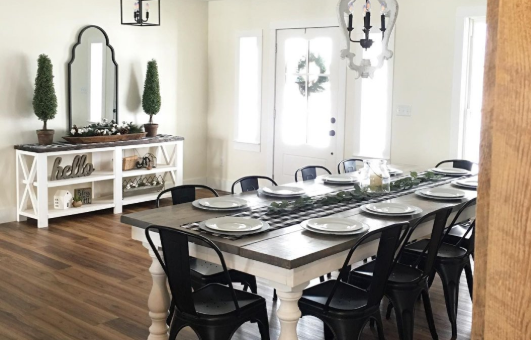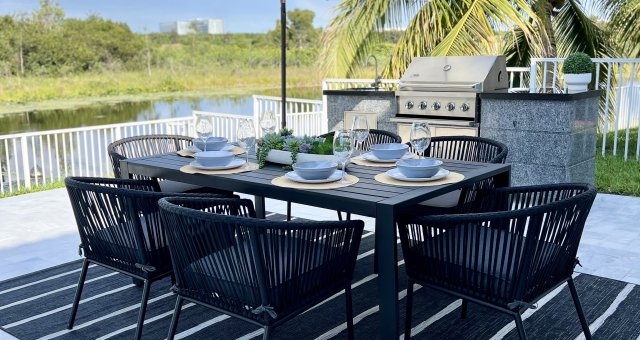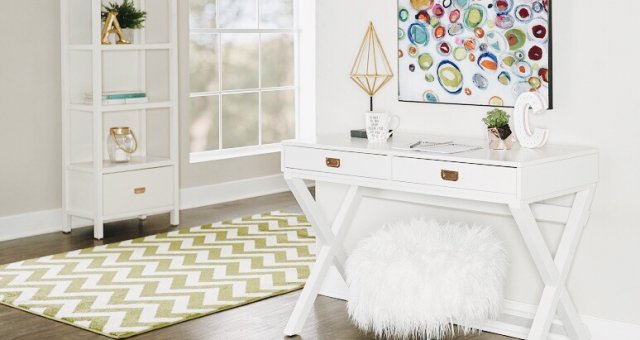Outdoor furniture is an investment that you can enjoy for years with proper maintenance and protection. Here’s how to keep your outdoor furniture sets looking fresh and fine for lounging on lazy summer days or entertaining al fresco with family and friends.
Outdoor Furniture Protection: More Than Just Guarding Against Fading
We all love the idea of creating a backyard oasis with comfortable seating, lighting, and décor that speaks to our personality and style. Unfortunately, Mother Nature doesn’t treat patio furniture with the same TLC that we do.
Outdoor furniture can take a beating, with the sun causing fabrics and paint colors to fade. Rain can cause wood rot, mildew, mold, and rust. Some materials, such as bamboo and wicker, can split and become brittle through changes in temperature.
How to protect outdoor furniture depends in large part on what your patio furniture is made of, as well as how much time you can devote to maintenance.
What Are the Most Durable Outdoor Furniture Materials?
Designers list these as some of the most durable outdoor furniture materials:
- Recycled plastic lumber, which weathers all types of temperatures well and is water-resistant and environmentally friendly
- Fabrics such as solution-dyed olefin or acrylic, which are also good through different temperatures, water-resistant, and sun-resistant. (These are a prime choice for cushions and outdoor umbrellas.)
- Wrought iron and cast iron, which have an enduring style and a sturdiness that withstands all types of weather. They can get hot in the summer without a cushion, though.
- Cast aluminum, which is less costly than other metals and doesn’t rust.
- Cedar, which is insect-resistant and water-resistant, although more expensive than other wood types.
- Cypress, which is water-resistant and rot-resistant but is also flammable and can fade.
- Synthetic wicker, which is water-resistant through all sorts of weather and doesn’t fade.
- Teak, which can be pricy but is water-resistant and stylish.
- Concrete, which is exceptionally durable and cheap but can stain easily and feel uncomfortable. (Keep some cushions handy.)
While you’ll want to protect outdoor furniture from rain and other weather, remember that you’ll also want to keep it clean from dirt and leaves. No one wants to host an outdoor dinner party where guests need to dust off their clothes once they stand up from the table. Outdoor furniture covers are a simple and affordable way to provide protection from wind, water, and UV rays—plus, they store easily when not in use.
Tips for Weatherproofing Your Outdoor Furniture
The best way to weatherproof your outdoor furniture depends on the materials of your patio furniture. Protect metal furniture with a rust-resistant primer, followed by a fresh coat of paint and paste wax, which designers describe as furniture sunscreen. Plastic, resin, fiberglass, vinyl, and metal furniture also can benefit from a coat of spray-on outdoor furniture protectant, which minimizes surface grime while adding UV protection.
Protect outdoor wood furniture by applying varnish or a sealant after scrubbing, rinsing, and sanding the wood. Polyurethane with UV blockers prevents drying, cracking, and fading while preserving the wood’s natural look.
Linseed oil and tung oil are two natural oils that designers also recommend for protecting wood furniture, although they don’t last as long as varnishes or sealants. We recommend protecting your furniture with a coat of paint, varnish, sealant, or natural oil and then covering it when not in use, especially if you live in a harsh climate.
To keep pillows, cushions, and other fabrics looking new and free of mildew and mold, look for a fabric-protecting spray finish, which repels water on everything from canopies to tablecloths.
How to Protect Plastic Outdoor Furniture
There is a low-cost way to protect outdoor furniture and outdoor cushions. Look for covers with a UV-stabilized coating and a water-resistant layer, as well as a way to attach the covers securely to resist wind, such as with adjustable belts or click-close straps.
You also can protect your furniture through regular dusting and cleaning. Synthetic wicker or plastic, for instance, looks brand-new after a dose of mild soap and water. (Just don’t use groundwater that might contain iron oxide, sulfur, or other minerals, which can stain, home experts say.)
Keep some soft cloths handy to wipe off your furniture after it rains, and immediately clean up any food or beverage spills or droppings from trees and from birds and other critters. Have plenty of beach towels for seating around the pool to provide an extra barrier for guests wearing suntan lotion, body oil, or chlorine from a recent dip.
Does Outdoor Furniture Need to Be Covered?
For the most part, yes. Granted, that doesn’t have to mean whipping out the furniture covers at every turn. A large umbrella, a gazebo, or other shady outdoor structure can protect outdoor furniture from harsh direct sunlight, especially if you live in an area with warm weather where you’re headed outside to enjoy the patio daily.
Furniture covers can come in handy and save you time and maintenance when you know you won’t be using your sectional, dining set, or other outdoor furniture for a while, such as during cold winter months. That said, if you have outdoor furniture that’s somewhat delicate, experts recommend storing it in a garage or other storage space during the off-season.
How to Protect Wooden Outdoor Furniture
Mold and mildew can lead to wood rot. To protect outdoor wood furniture from rotting, be sure that your pieces have dried completely after any gentle cleaning before covering them with furniture covers. Any moisture trapped under a tarp or slipcover is a prime breeding ground for mildew, mold, and rot.
If you notice mold, especially in a humid climate, you can remove it with a one-to-one mixture of white vinegar and baking soda. On hard surfaces, use a mixture of 8 tablespoons of baking soda plus 1 cup and 4 tablespoons of white vinegar. Apply it to the moldy area and scrub with a brush, then wipe clean with a damp cloth and let dry.
Want more outdoor inspiration? Visit an Ashley store near you, or check out our Pinterest boards or Instagram at #MyAshleyHome for ways to decorate and arrange your outdoor space.




